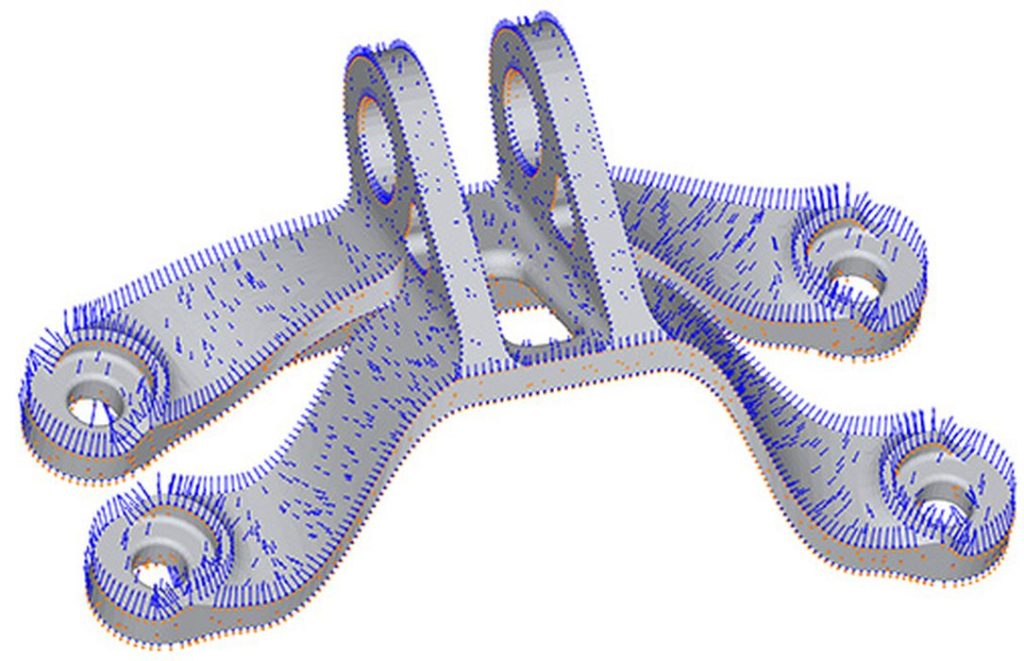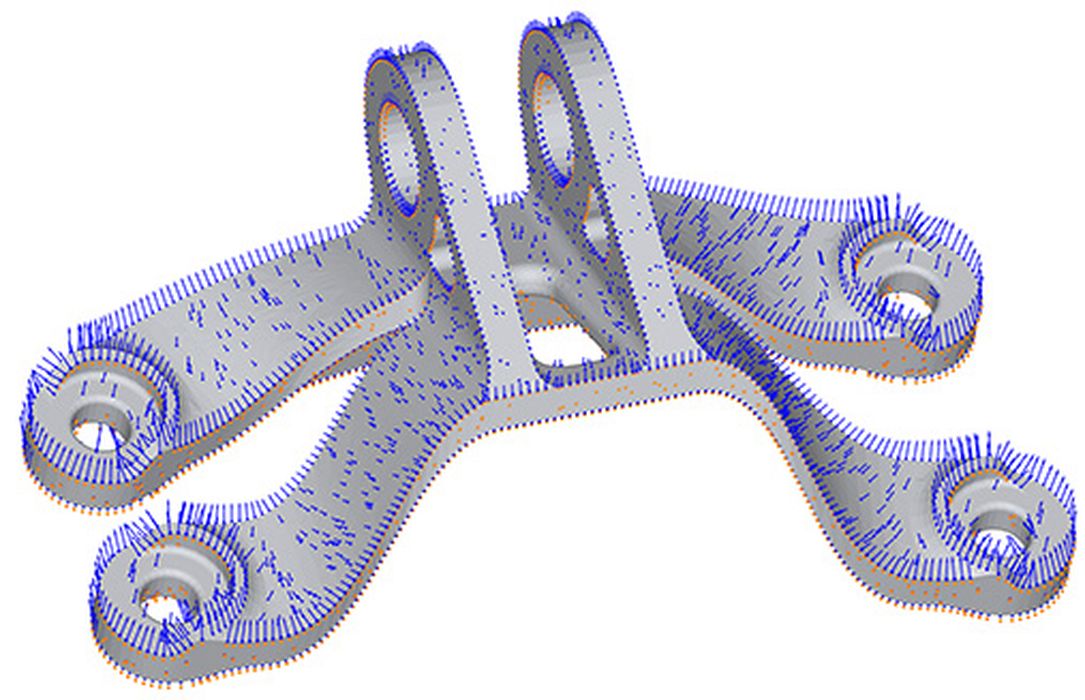
MachineWorks mesh management SDK gets a serious update.
MachineWorks Ltd., makers of Polygonica, announced a new version, and with it, a much-needed method to handle the distortion that invariably results when printing a part in metal. Because of uneven cooling, a 3D-printed metal part will take on a shape that’s different enough from the design to be rejected. This leads to manually measuring or scanning the distorted part, and then estimating from the measurements how to change the design shape so that when the distortion occurs, the part will distort to the design shape.
Because the estimation may be off, and because the “movements” of the part may not be the same because they don’t originate from the same shape, this could very well be a trial-and-error, wasteful and expensive process.
Determining a shape from the design shape that will distort when cooled to the desired design shape in one go has been the dream of engineers. While some simulation programs claim to be able to account for 3D printing distortion, none have proven their case convincingly.
The latest vendor to claim a solution is MachineWorks with Polygonica 3.2.
What Is Polygonica?
Polygonica is a software development kit (SDK), a library of software tools, that end-user software vendors can license for the purpose of working with polygon meshes.
The main functions of Polygonica include healing meshes and Boolean operations that are usually only possible with solid and smooth surface modelers like cutting, unioning and offsetting. Polygonica can also remesh, simplify meshes, detect features (like holes) and more.
How Does Deformation Compensation Work?
Polygonica reads the scan of a distorted 3D-printed part, compares it to the desired design shape and calculates a vector field representing the difference. These vectors are inverted and the inverted vector field is applied to the design shape. It is not known if the vectors are scaled intelligently, taking local thermal and shape effects into account, or simply flipped to the opposite direction. If the distortions are small, this may not matter. The desired result is that the shape will be—after printing and cooling—the design shape, or within a certain tolerance.
Read the rest at ENGINEERING.com

